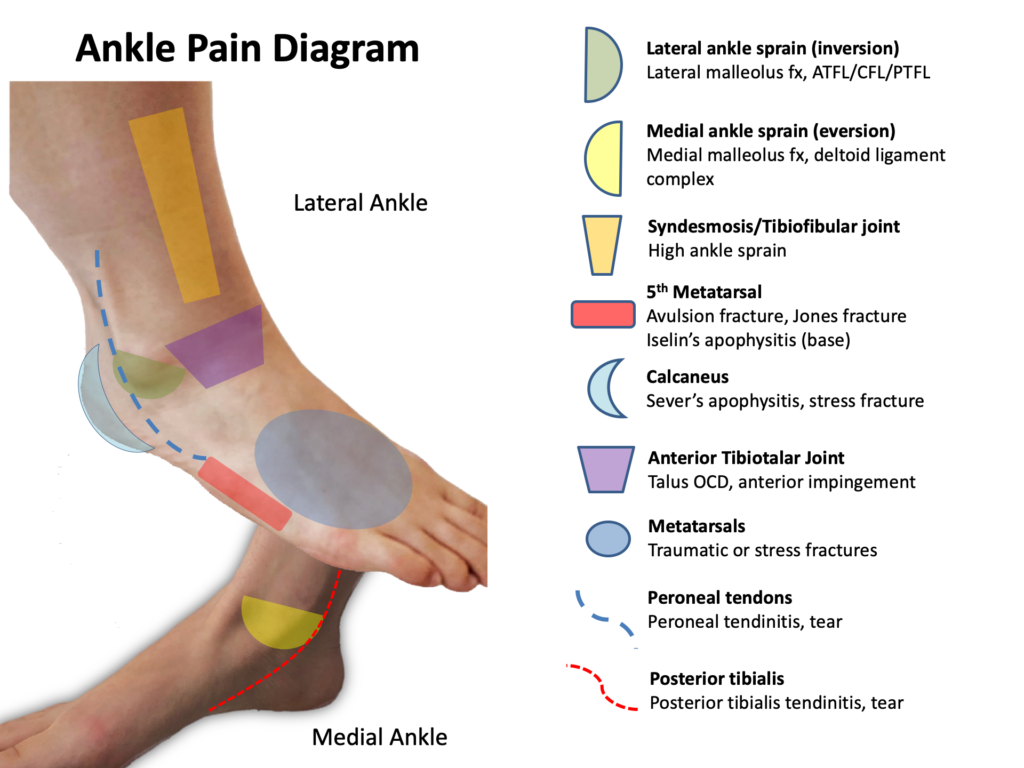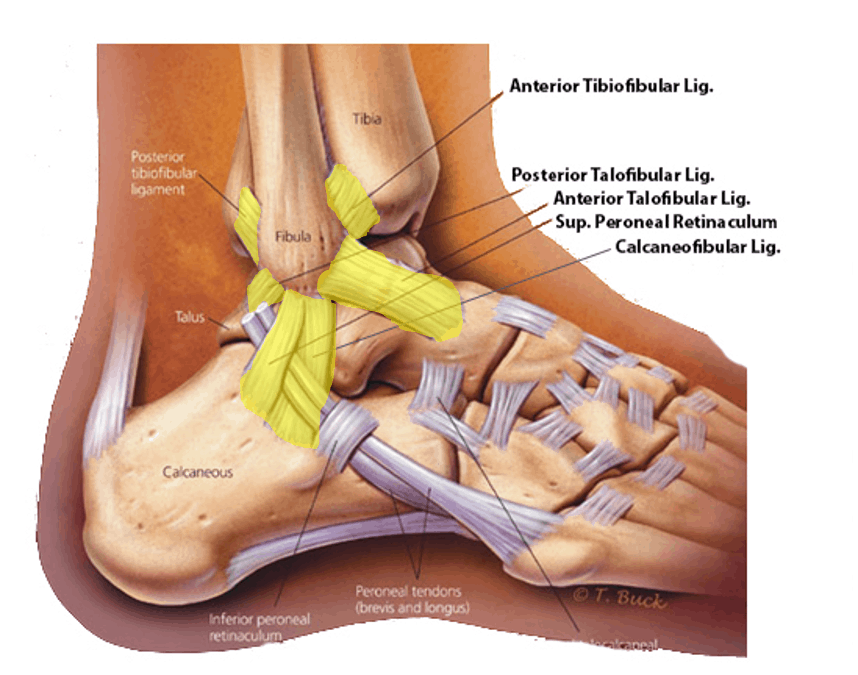Ankle Ligament Repairs
Your ankle is a hinge joint that allows motion up and down, and from side to side. Your foot and ankle have several ligaments. These are strong band-like structures that keep the bones in your ankle and feet tightly connected. On the outer side of your foot, you have several ligaments. These include the anterior talofibular ligament (ATFL) and the calcaneofibular ligament (CFL). These help keep your ankle and foot steady when you walk. When sprains occur, the ligaments stretch beyond normal capacity and tear. Ankle sprains range from mild to severe and in most cases do not require surgery. Sprains of the midfoot — called a Lisfranc injury — can often be treated successfully with non-surgical techniques as well. But in more serious cases, ligament repair surgery may be recommended.
We treat ankle injuries and conditions in our General Medicine, Sports Medicine, Orthopedics, Physical Therapy, and Imaging departments. We offer same-day and same week appointments for these injuries and conditions.
Symptoms
Signs and symptoms of a sprained ankle vary depending on the severity of the injury. They may include:
Pain, especially when you bear weight on the affected foot
Tenderness when you touch the ankle
Swelling
Bruising
Restricted range of motion
Instability in the ankle
Popping sensation or sound at the time of injury
Diagnosis and Treatment
At Aptiva Health, our sports medicine and orthopedic teams utilize musculoskeletal ultrasound, an advanced imaging technology, to accurately diagnose conditions in addition to our high-field open MRI.
A musculoskeletal ultrasound uses sound waves to create images of soft tissues in the foot and ankle such as ligaments, tendons, muscles and nerves. These images are extremely detailed and can reveal the extent of damage and exact cause of all types of foot and ankle ligament conditions.
Your physician will determine the severity of your sprain by assigning a "grade" to it:
Grade 1: Minimal stretching and tiny microscopic tears in the fibers of the ligaments accompanied by mild swelling, redness and pain.
Grade 2: Partial to moderate tear of the ligaments accompanied by swelling, redness and pain.
Grade 3: Completely torn ligament accompanied by swelling, redness, pain and total ankle instability
Dependent upon the severity of the ankle injury or sprain, your doctor will determine what treatment plan will work best. For less severe sprains and ankle injuries, the following conservative treatments may be recommended:
Activity modification
R.I.C.E. (rest, ice, compression and elevation)
Anti-inflammatory medication
Compression: bracing, casting, wraps, or kinesiotaping
For more severe ankle sprains or injuries, or for chronic ankle conditions, surgery may be indicated. Dr. Ryan Eads may discuss proceeding with an ankle arthroscopy if you:
Experience chronic pain in your foot and ankle
Suffer from repeated ankle sprains
Have an ankle that gives way when walking, running or exercising
If you have severe ligament damage caused by an ankle sprain, overuse or injury, your doctor will likely recommend ankle ligament surgery.
Ankle Arthroscopy (keyhole surgery) involves examination and surgery inside the ankle joint through two or three small incisions in the skin. This enables the problem with your ankle to be assessed and treated at the same time.
Conditions that commonly require ankle arthroscopy
Loose fragments of bone or cartilage
Treatment of bony or cartilage defects
Scarring of joint lining
Excess scar tissue after injury
Biopsy
Ankle ligament reconstruction surgery is used to treat lateral ankle instability and sprains. The objective is to prevent the ankle from giving way and stabilizing it. This surgery is intended for active, healthy patients who have experienced frequent ankle sprains which has led to chronic ankle instability and pain. This surgery is typically carried out in an outpatient ambulatory surgery center where you are given a general anesthetic along with an injection around the ankle so that it’s numb and pain-free after surgery.
In some cases, the surgeon will first carry out ankle arthroscopy to inspect the joint before repairing the ligament. The procedure itself involves one incision (cut) on the outside of the ankle to allow the surgeon to locate the scar tissue from the torn ligament near the fibula bone, and carry out a repair with stitches to the bone.
Our Sports Orthopedic Team
J. Steve Smith, MD
Director of Orthopedics
Curriculum Vitae
Timothy Wilson, MD
Sports Orthopedic Surgery
Curriculum Vitae








